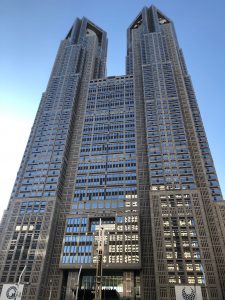
TMG Buildings
Tokyo’s Blueprint for Long-Term Disaster Resilience: Lessons for Local Governments
Tokyo, one of the world’s most populous and densely built cities, faces a daunting array of natural hazards ranging from earthquakes and volcanic ash to floods, storm surges, power outages, and infectious disease outbreaks. In response, the Tokyo Metropolitan Government (TMG) has launched the TOKYO Resilience Project, a far-reaching initiative designed to safeguard the city’s physical and societal fabric for the next century. This article highlights key aspects of Tokyo’s approach to disaster management and resilience, offering insights potentially valuable for UK local authorities.
At its core, the TOKYO Resilience Project embodies a strategic vision: to make Tokyo resilient, safe, and sustainable through the 2040s and beyond, preparing for the next 100 years. The project recognises that risks come in many forms, not only from the seismic activity that most readily comes to mind in Japan but also from climate-related hazards such as more intense rainfall and storm surges, as well as the cascading effects of power outages, communications failures, and public health crises. This comprehensive view is essential in a megacity where even a temporary disruption can affect millions of lives and ripple through the global economy.
One of Tokyo’s distinguishing features is the way it balances large-scale engineering works with cutting-edge digital tools. For flood and storm mitigation, the city has expanded regulating reservoirs, reinforced seawalls, and invested heavily in sewer infrastructure to address the twin threats of heavier rainfall—expected to increase by around 10 per cent—and sea-level rise, projected at up to 60 centimetres in coming decades. A striking example of this commitment is the development of underground regulating reservoirs. These are constructed by excavating tunnels around 40 metres below ground level to temporarily store excess rainwater during heavy downpours, thereby reducing the risk of river flooding. Currently, Tokyo is advancing plans to connect two existing reservoirs through a 13.1-kilometre tunnel system, creating a large-scale, integrated flood control facility beneath the city. As climate change intensifies “guerrilla” downpours, Tokyo is continuing to expand and enhance this facility to maintain its protective capacity.
Earthquake preparedness is another cornerstone of the project. Experts estimate a 70 per cent chance of a magnitude seven quake striking the Kanto region within 30 years, and Tokyo has responded by making its built environment significantly more resilient. Vulnerable wooden housing zones have been reduced dramatically, from 24,000 hectares to 8,600 hectares within a decade, while the proportion of earthquake-resistant buildings has risen from 81 per cent in 2012 to 92 per cent in 2022. Financial incentives and subsidies help homeowners, hospitals, and schools retrofit their buildings, ensuring that resilience is strengthened at the community level as well as in the commercial core.
Alongside physical defences, Tokyo is harnessing digital innovation to anticipate and respond to crises. Artificial intelligence is now being deployed to control floodgates and predict water flow, while drones are used to assess damage quickly and safely in disaster zones. A “Digital Twin” of the city is being developed—a three-dimensional simulation that allows authorities to model risks, stress-test scenarios, and refine urban policy. This system is expected to be fully operational by 2030, embedding foresight and agility into the city’s planning processes.
Preparedness also relies on informed and engaged citizens. The metropolitan government provides guides, videos, and pamphlets to households, ensuring residents know how to respond when disaster strikes. Annual disaster preparedness drills, scheduled well in advance, allow residents to practise evacuation and safety protocols. Tokyo has even legislated for private-sector preparedness: businesses are required to stockpile three days of supplies, a policy introduced after the 2011 Tōhoku earthquake when millions of commuters were stranded.
Recovery is treated as an equally important part of resilience planning. The city has developed a set of “Principles for Urban Recovery,” which set out how essential services, mobility, and daily life will be restored quickly in the aftermath of major shocks. By embedding recovery into forward planning, Tokyo ensures that the city can move from response to renewal with minimal delay.
For UK local government leaders, Tokyo’s approach offers several valuable lessons. The first is the importance of adopting long-term planning horizons: Tokyo is preparing not only for the next crisis but also for the next century. The second is the value of combining hard infrastructure such as flood barriers with soft measures like digital monitoring and public education. Equally important is the culture of community engagement, which empowers residents and businesses to share responsibility for resilience. Finally, Tokyo demonstrates the benefit of integrating recovery considerations into disaster planning from the outset.
Tokyo’s blueprint for resilience – rooted in foresight, innovation, and societal collaboration – offers a rich model for local authorities in the UK. With climate change amplifying risks worldwide, learning from cities like Tokyo could help build safer, more adaptive, and future-ready communities on this side of the world.
Sources:
Tokyo Metropolitan Government. TOKYO Resilience Project. https://tokyo-resilience.metro.tokyo.lg.jp/en/
Tokyo Metropolitan Government. Disaster Preparedness Tokyo (Guide). https://tokyo-resilience.metro.tokyo.lg.jp/assets/pdf/DisasterPreparednessTokyo.pdf
UNECE. Tokyo Metropolitan Government Resilience Measures Presentation. October 2023. https://unece.org/sites/default/files/2023-10/2_Tetsuro_Fujisak.pdf
Tokyo Flood Control Measures: The 13 km Underground Tunnel Protecting the City from Urban Flooding. https://www.g-nets.metro.tokyo.lg.jp/en/insights/202503-case-study.html
CNN. Tokyo: City of the Future (sponsored content on resilience). https://sponsorcontent.cnn.com/int/tmg-resilience/tokyo-city-future/
Tokyo Metropolitan Government. Urban Development in Tokyo 2023 (English Edition). https://www.toshiseibi.metro.tokyo.lg.jp/pamphlet/pdf/udt2023english_3.pdf
Wikipedia. Metropolitan Tokyo Ordinance on Measures for Stranded Individuals. https://en.wikipedia.org/wiki/Metropolitan_Tokyo_Ordinance_on_Measures_for_Stranded_Individuals

